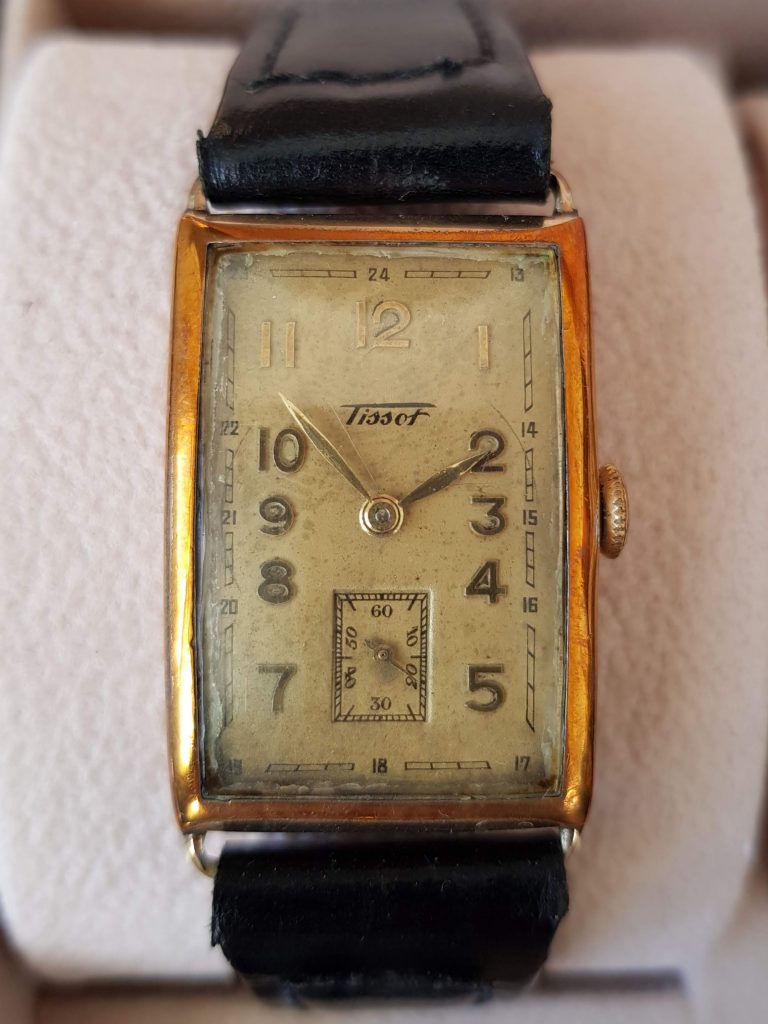| Brand | Tissot |
| Model | Lisboa Antimagnetique |
| Year | 1935 |
| Caliber | Cal. 20 Cal. nr. 657304 |
| Details | Size 2x/x/x(w/h/lug mm) |
| Links | Tissot Watches: History |
| Search | dba.dk / “Tissot” chrono24 / “Tissot” |
Tissot History
Chs Tissot & Fils was founded in Le Locle, in the Jura region of Switzerland in 1853 by the locally born & bred father-son duo of Charles-Félicien Tissot and Charles-Émile Tissot. As with most Swiss watch companies founded in that era, Tissot began life as a comptoir, an assembler of parts procured from individual makers in the region. In that first year, the company delivered between 1100 and 1200 watches to the region around Le Locle.
By 1858, the younger Tissot, Charles-Émile, was off to Russia, and with the blessing of the Czar, was selling Tissot brand pocket watches all across the Empire. Between 1860 and 1875, Tissot produced spare parts and watchmaking tools, among other small items, as well as finished watches.
Also notable, throughout the period of the late 1800s, Tissot was the recipient of numerous awards and prizes in several industrial exhibitions. Among the prizes taken were the Diploma of Honour in Zurich in 1888, the Grand Prix and Gold Metal in Antwerp in 1890, the Grand Prix in Paris in 1900, and First prize for Chronometers and for Marine Chronometers in the Neuchâtel Observatory Competition in 1907.
Charles-Émile’s son Charles was firmly established in Russia by the late 1880s. His son Paul was born in 1890, and daughter Marie in 1897. Paul and Marie were both to become instrumental in the running of Tissot, Paul handling general business affairs with his father, and Marie doing the day to day running of the company.
In 1918, Tissot reorganized their ébauche workshops, taking it from a fabrique to a manufacture. It was making the ébauches for its movements in its own factory and began to mass-produce them.
Times Change, Names Change

As ownership of the company changed, being passed from father to son (and behind the scenes, daughter), the name changed as well. In 1865, the company became Charles- Émile Tissot & Fils. In 1917, the name changed again, to Chs. Tissot & Fils – SA.
1930 and the newly minted partnership with Omega saw Tissot under the banner of SSIH, and in 1976, the name Tissot Marché Suisse SA appeared. Ultimately, in 1982, Tissot was doing business under the formal name of Tissot SA.
The following year, SSIH merged with ASUAG to become SMH (Société de Microélectronique et d’Horlogerie), and came under the direction of Nicolas Hayek.
Merger with Omega and the Genesis of the Swatch Group
In 1925, Tissot entered into a commercial partnership agreement with Louis and Gustave Brandt, directors of Omega in Bienne. This is the original partnership that let to the 1930 creation of the Société Suisse pour l’Industrie Horlogère (SSIH).
In 1930, to stave off the effects of the economic crisis of 1929, Charles and Paul Tissot entered into an agreement with Omega to form SSIH. SSIH in turn, merged with ASUAG (Allgemeine Schweizerische Uhrenindustrie AG ) 53 years later, ultimately becoming the Swatch Group. Thus, Tissot represents a fair chunk of Swiss watch history with respect to the Quartz crisis and Switzerland’s reaction to same. We chronicled the foundation and evolution of the Swatch Group in an article earlier this summer.
Post-War Years
The period between 1945 and 1975 was marked by extreme growth. Company benefits and perquisites were many and frequent. Tissot was a major employer in Le Locle, and retirees still quietly brag about being Tissot pensioners.
The post-merger associations with Omega and other brands such as Lemania as they came under the SSIH umbrella benefited all concerned. Until, that is, the quartz crisis hit. If one reviews the company website and other historic literature, the company seems to be well aware that it owes its current existence to the various mergers that it’s been a part of. Additionally, much credit is given to the astute management of executives like Nicolas Hayek.
